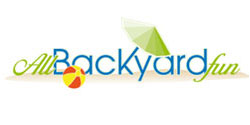Posts tagged Boulder
CU SNR team: Natural gas development to get a hard look
Oct 2nd
to study effects of natural gas development
The National Science Foundation has awarded a $12 million grant to a University of Colorado Boulder-led team to explore ways to maximize the benefits of natural gas development while minimizing negative impacts on ecosystems and communities.
Led by Professor Joseph Ryan of CU-Boulder’s civil, environmental and architectural engineering department, the team will examine social, ecological and economic aspects of the development of natural gas resources and the protection of air and water resources. A part of NSF’s Sustainability Research Network initiative, or SRN, the project will focus on the Rocky Mountain region, where natural gas development, as well as objections to it, are increasing.

“We all create demand for natural gas so we have to accept some of the outcomes of its extraction,” said Ryan. “Our goal is to provide a framework for society to evaluate the trade-offs associated with the benefits and costs of natural gas development.”
The SRN team assembled by Ryan includes air and water quality experts, social scientists, human health experts, information technology experts and a substantial outreach and education effort. The SRN team will be advised by an external committee that includes representatives of the oil and gas industry, regulatory agencies, environmental organizations, local governments, academia and Native American tribes. Preparation of the SRN proposal to the NSF was fostered by CU-Boulder’s Office for University Outreach, which supported the creation of the Colorado Water and Energy Research Center, said Ryan.
As part of the effort, Ryan said team members will review industry practices for hydraulic fracturing, which involves pumping pressurized water, sand and chemicals deep down well bores to crack rocks and free petroleum and natural gas for easier extraction. The team will evaluate the current state of drilling technology, the integrity of well bore casings and natural gas collection mechanisms and processes.

- Drill pads around the Roan Plateau
- Hydraulic fracturing requires large volumes of chemically treated water — most wells require between 3 million and 5 million gallons of water each, say experts. The fracturing fluid left in the ground, as well as the fluid that returns to the surface, known as “flowback,” present potential ecological and health risks if not handled properly, Ryan said.
While oil and gas extractions from hydraulic fracturing also result in atmospheric emissions of some greenhouse gases and volatile organic compounds, natural gas is nevertheless seen by many as a “bridge fuel” that leads away from dirty coal combustion toward cleaner sustainability methods, said Patrick Bourgeron, associate director of the SRN and a fellow at CU-Boulder’s Institute for Arctic and Alpine Research.
As part of the project, a team led by CU-Boulder Professor Harihar Rajaram will be investigating the hydrologic processes tied to potential risks of natural gas and oil extraction, including groundwater and aquifer systems. The team also plans to assess the risk of natural gas and oil extraction to water quality and mitigation strategies that involve improvements in current water treatment technology.
Professor Jana Milford of CU-Boulder’s mechanical engineering department will lead a team monitoring and modeling the potential risks of natural gas and oil development to air quality. Professor John Adgate of the Colorado School of Public Health in Denver will spearhead a team assessing the potential risks of natural gas development to public health.

Natural gas waste pit
Other partners on the CU-led NSF project include the Colorado School of Mines, Colorado State University, the University Corporation for Atmospheric Research in Boulder, the National Renewable Energy Laboratory in Golden, Colo., the National Oceanic and Atmospheric Administration, the University of Michigan and California State Polytechnic University Pomona.
Attitudes toward natural gas extraction using hydraulic fracturing vary widely around the West, said CU-Boulder Professor Mark Williams, a co-investigator on the project. One classic Colorado example is Boulder County and adjoining Weld County to the northeast. “The geology doesn’t change, the price of gas doesn’t change and the extraction methods are the same,” he said. “But for the most part, Boulder County opposes hydraulic fracturing while Weld County generally embraces it.”
Ryan said the network’s research findings eventually will be shared with the public through an extensive outreach and education effort led by SRN co-investigator and CU-Boulder Professor Patricia Limerick of the Center of the American West. The effort includes a “citizen science” component in which the public is encouraged to make science measurements, including air quality readings made with portable instruments compatible with smart phones, and share the results with the SRN research team.
“The citizen science aspect of this effort will result in a stronger connection between the public and the science used to make regulatory decisions,” said Professor Michael Hannigan of CU-Boulder’s mechanical engineering department and one of the co-investigators on the SRN project.

Natural gas production, especially the use of hydraulic fracturing, has become the subject of intense controversy, said Limerick. “Some people living in proximity to well sites are understandably worried and anxious, often feeling powerless as they confront a possible threat to their health and to the quality of their lives.
“Environmental advocates find themselves pulled between the climate benefits of natural gas, which releases significantly less carbon in combustion than coal, and the disturbances associated with natural gas extraction,” she said.
Outreach events will include periodic town hall meetings around the West. There also will be SRN meetings involving engineers, natural scientists and social scientists to stay abreast of the latest technologies and evolving socioeconomic factors regarding natural gas production, Limerick said.
“Unraveling complex processes involving Earth systems, especially the coupling of human activities and climate, depends increasingly on partnerships among natural science, philosophy and ethics, economics, social science, mathematics and engineering,” says Marge Cavanaugh, NSF acting assistant director for geosciences.
The CU-led research team and a second team from Penn State were chosen from more than 200 SRN proposals by the NSF as part of its Science, Engineering and Education for Sustainability program. The $12 million award to CU-Boulder is for five years.
Fifth annual Lighten Up Boulder safety campaign offers discounts for bike lights
Sep 28th
As fall sets in and the days get shorter, the City of Boulder, Community Cycles, the University of Colorado (CU) and local businesses are teaming up for the fifth annual Lighten Up Boulder safety campaign to encourage the use of bike lights for nighttime riding. The campaign offers 10 to 20 percent discounts on select bike light accessories at participating Boulder businesses.

Bike light coupons can be printed from the GOBoulder.net website or picked up during business hours at the following locations:
- the GO Boulder office at 1739 Broadway, second floor,
- the Community Cycles shop at 2805 Wilderness Place, Suite 1000; or
- the CU Bike Station on campus at the University Memorial Center (UMC).
The coupons can be redeemed at any of the eight different retailers listed on the coupon and are valid through Wednesday, Nov. 14, 2012.
The campaign also reminds cyclists that biking at night without proper lighting is both illegal and unsafe. Without bike lights, cyclists cannot see what’s ahead and drivers cannot see cyclists. The Boulder Revised Code requires all cyclists traveling between sunset and sunrise to equip their bikes with both a mounted white light on the front and a red reflector on the back (B.R.C. 7-5-11: Bicycle Headlight and Reflector Required).
“Riding your bike at night without adequate lighting can result in dangerous situations for you and others, as well as a $50 fine,” said Bicycle/Pedestrian Transportation Planner Marni Ratzel. “We hope that this campaign will encourage more cyclists to mount lights on their bikes, making nighttime travel in Boulder safer for cyclists, drivers and pedestrians.”
For access to bike light coupons, bike maps and safety tips, visit www.goboulder.net.
Meet the Spirits at Columbia Cemetery on Oct. 7
Sep 28th
On Sunday, Oct. 7, meet famous Boulder residents from the past, such as Tom Horn, “Rocky Mountain Joe” Sturtevant, Mary Rippon, “Lady of the Evening” Marietta Kingsley and many other Columbia Cemetery “residents,” who will rise from the dead to tell their stories from noon to 5 p.m. at Columbia Cemetery in the annual “Meet the Spirits” event.
Get into the Halloween spirit with Victorian mourners, funereal music, vintage hearses, and a reenactment of a solemn Masonic burial service by members of Columbia Lodge #14.
Ghost hunters will also demonstrate the equipment and techniques used in their paranormal research.
This fun and educational event is sponsored by Historic Boulder, Inc. and the City of Boulder Parks and Recreation Department. Tickets are $15 for adults, $12 for Historic Boulder members, $5 for children under 16, and are available in advance at Historic Boulder, 1123 Spruce St. in Boulder, or at Columbia Cemetery at Ninth and Pleasant streets on University Hill on the day of the event.
Proceeds benefit Columbia Cemetery and Historic Boulder. Rain/snow date for the event is 12 to 5 p.m. on Sunday, Oct. 14.
For more information, call 303-444-5192. www.boulderparks-rec.org.






















